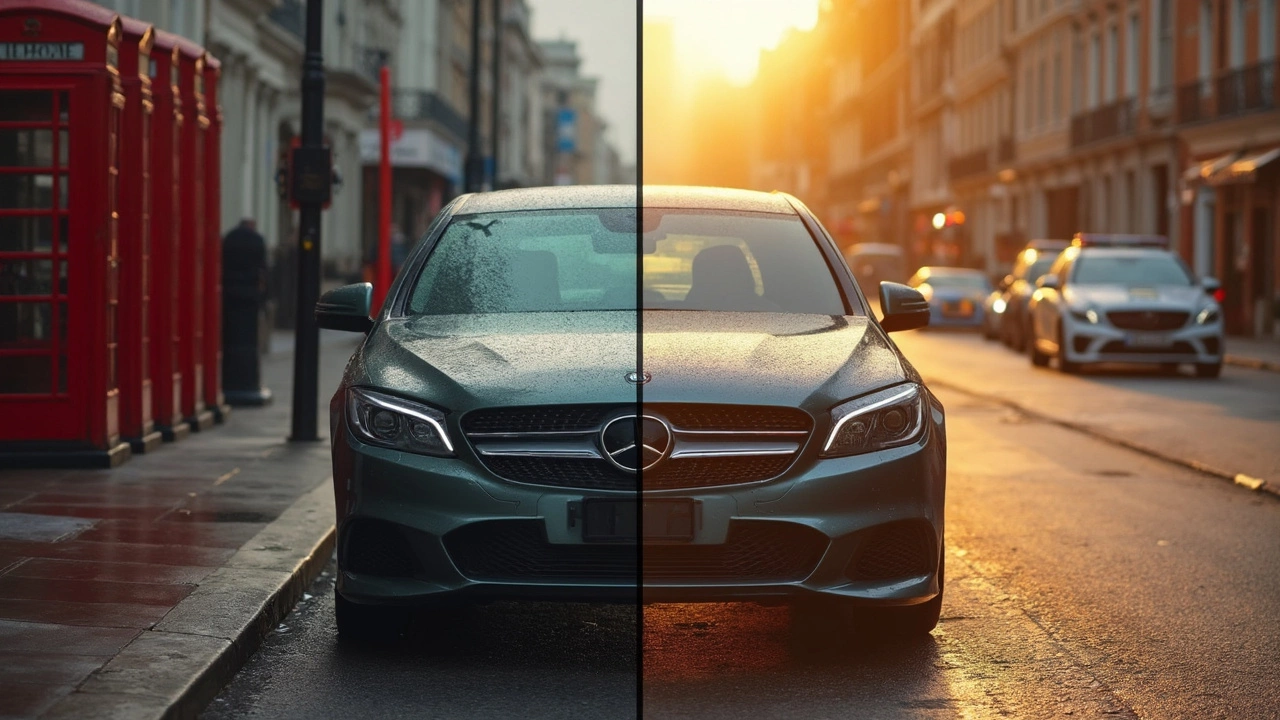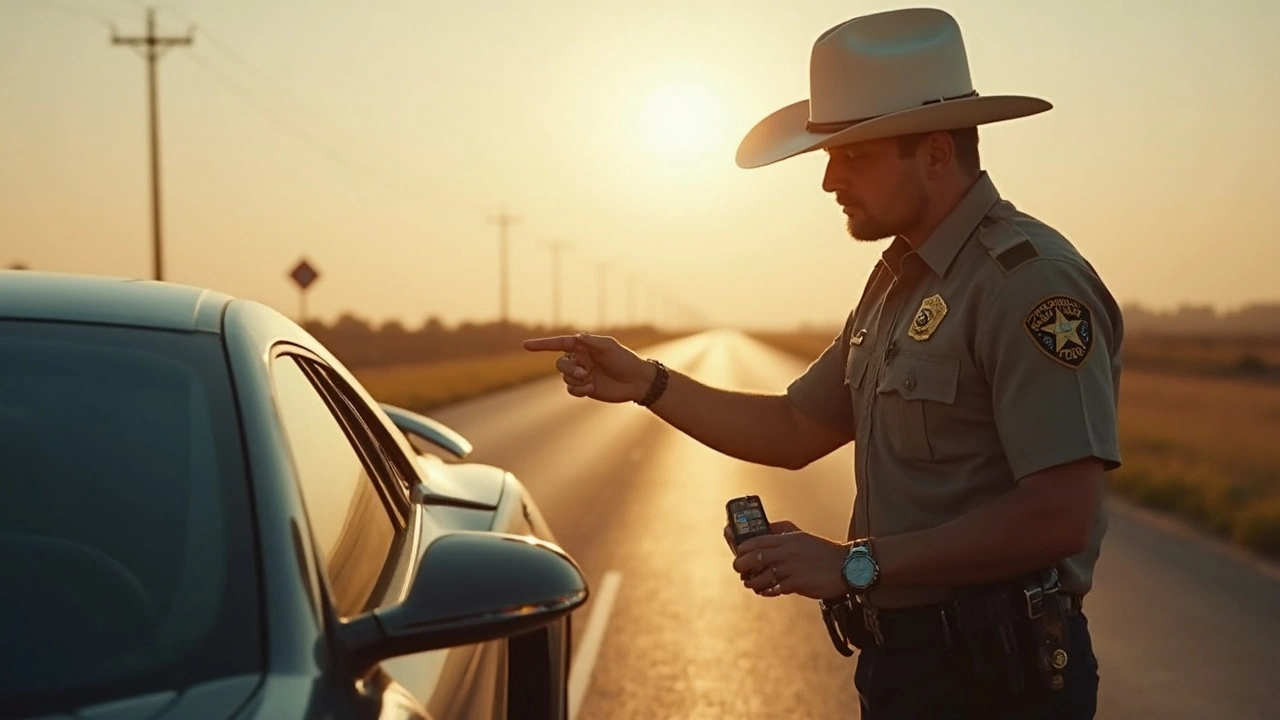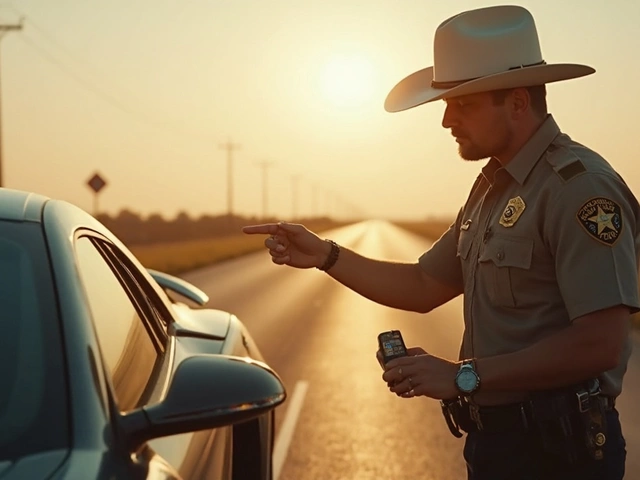Put 5% tint on your ride in Texas and you’re basically driving around with blackout shades. Sure, it looks sleek and offers privacy, but here’s the harsh truth—Texas law says front side windows must let in at least 25% of light, and the windshield rule is even stricter. That 5% stuff (often called limo tint) is way below legal limits anywhere regular folks sit. So yes, it stands out to cops like a sore thumb.
Thinking you’ll slide under the radar? Not likely. Law enforcement in Texas spots dark tint from a mile away, especially during daytime traffic stops or at nighttime checkpoints. Some officers carry portable meters and will check your windows on the spot. Most won’t bother guessing—they know what 5% looks like, and if your tint’s about three shades darker than what they see on most cars, you’re probably getting pulled over.
- What Texas Law Says About 5% Tint
- How Police Check for Illegal Tint
- Real Risks: Fines and Consequences
- Tips Before You Tint
What Texas Law Says About 5% Tint
Texas law doesn’t mess around when it comes to window tint darkness. The rules spell out exactly how much light has to get through your car windows, and trust me—5% tint doesn’t make the cut for most windows.
Here’s the breakdown straight from Texas Transportation Code:
- Windshield: Tint is only allowed on the top 5 inches (that’s called the visor strip), and it has to let in at least 25% of visible light. Anything below that visor strip can’t have any tint, not even clear film, unless it’s factory-tinted glass.
- Front side windows (driver and passenger): Must allow at least 25% of outside light in. 5% is way darker than this—almost no light gets through. That makes it illegal for these windows.
- Back side windows and rear window: These can be as dark as you want—yep, even 5% is legal—but only if you have side mirrors on both sides of your car.
Here’s a look at the limits in a handy chart:
| Window | Legal Visible Light Transmission (VLT) |
|---|---|
| Windshield (above AS-1 line or top 5 in.) | ≥ 25% |
| Front Side Windows | ≥ 25% |
| Back Side & Rear Windows (with side mirrors) | Any darkness |
Here’s the kicker: It doesn’t matter who installed your tint or if it came with the car—if cops measure less than 25% light passing through the front side windows, you could get pulled over and possibly ticketed. Don’t get fooled by myths online; Texas officers are trained to spot illegal tint. Only some medical exemptions allow for darker shades, but you need legit paperwork for that, and they check.
How Police Check for Illegal Tint
So, how do Texas cops actually bust drivers for illegal tint? It’s mostly about glare—or rather, the lack of it. That deep, dark shade like 5% tint makes it tough to see inside your car from the outside. Police can usually spot tint that's way beyond what's normal just by looking. If your windows look blacked out, that's a red flag before they even get out of the squad car.
But they don’t just eyeball it. Most departments carry a device called a tint meter, officially known as a photometer. Here’s how it works:
- After they pull you over, they'll ask you to roll your window up completely.
- They clamp the meter onto the glass, usually your front side window.
- The meter beams light through the glass and measures how much comes through to the other side.
- If the reading is less than 25% light transmission, that's an instant violation for front side windows.
The whole test takes like ten seconds. Officers have done this so many times, odds are they know before the meter spits out a number. They’re also looking for aftermarket jobs because factory tint is usually mild enough to meet the law.
One more thing: Night shifts can be even tougher, since tinted cars stick out more after dark. If you’ve got 5% on the front, don’t be surprised if flashing lights are in your rearview pretty quick. And it’s not just state troopers—city cops, sheriffs, pretty much any Texas law enforcement watches for this.

Real Risks: Fines and Consequences
If you’re rolling around with 5% tint in Texas, here’s what you’re dealing with if you get pulled over. First, the officer is probably going to hit you with a ticket for having illegal window tint. It’s a Class C misdemeanor—nothing that will land you in jail, but it’s still a legal headache. The fine usually lands somewhere between $20 and $500. Yes, that’s a big range. It depends on where you are, the judge you get, and if you have any prior ticket history.
But that’s not the end of it. Some cities will require you to remove the tint and show up in court or at your local police station so they can check your car. Basically, pay the fine, peel off the tint, and get proof you fixed it. If you don’t take care of it, you could rack up more fines or even face a warrant if you ignore the court date.
And here’s something that gets a lot of people: if you get caught with illegal tint, it can also fail your annual inspection. No inspection sticker means no registration renewal, so you’re risking a lot more than just a traffic stop. Some insurance companies might even see repeated tint violations as risky, which could mess with your rates over time.
- The *5% tint* keyword raises a red flag in Texas—functionally, it’s an automatic ticket if the officer sees it.
- Ignoring a tint ticket can snowball into bigger problems, like a hold on your license renewal or even a bench warrant.
- Repairing the issue (removing the illegal tint) and showing proof is usually required to avoid getting hit with extra fines later.
Bottom line: running with limo tint in Texas could cost you way more than the price of that slick new film. If you don’t want to deal with tickets, court, and the annoying job of scraping off tint, stick with something that meets the legal limit.
Tips Before You Tint
If you’re thinking about dropping cash on dark window film, you’ve got to know what you’re signing up for. Texas isn’t fooling around with window tint rules, and shops can get fined too if they ignore the regulations. Here’s how to protect your wallet and avoid constant police stops.
- Ask to see the shop’s tint meter. Any legit tint shop in Texas should have a light transmission meter. Make sure what you’re paying for is actually street-legal, not just what looks good in a dim garage.
- Get it in writing. If your shop promises “legal tint,” don’t just take their word for it. Ask for a receipt or documentation stating your tint meets Texas standards. This can be your backup if you get pulled over.
- Know the law before you pick a shade. Texas legal limit for front side windows is 25% VLT (visible light transmission). The 5% tint you see on limos is way off for regular vehicles. Rear windows can go darker on some trucks and SUVs, but not on sedans.
- Don’t forget the AS-1 line on your windshield. Any tint above that line is a no-go, except for a transparent film to block UV.
- Medical exceptions exist, but they’re strict. You’ll need a doctor’s affidavit and an official permit from DPS. Regular headaches from sunlight won’t cut it—it has to be a legit medical condition.
Double-check all this stuff before you spend a dime. Having to rip off your fresh tint after a ticket feels like burning money. Play it safe, and keep the cool factor without getting hit with fines.


